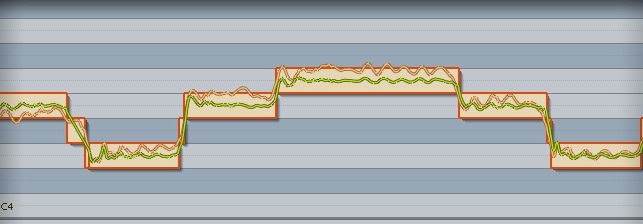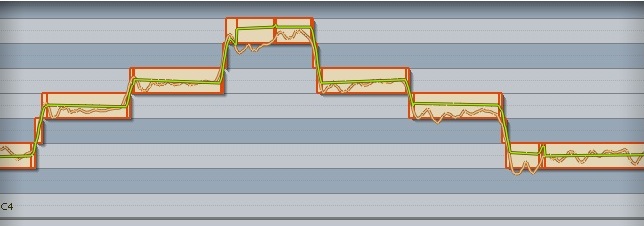Some people were interested in what tuning/pitch correction plug-ins can do with the theremin so I'll create a thread to discuss. I've spend the day playing around a bit with tuning programs and the Etherwave. These programs are mostly meant for the voice, but you would expect the theremin would transfer over well.
Autotuning from the theremin perspective is an effect so I'll discuss this topic here. Basically there are two main products: (Antarestech) Autotune and Waves Tune. Both are amazing programs with a lot of sophistication and control. Autotune has both a real-time low latency version and the flagship product for post-processing. Waves Tune is meant for processing recorded lines only. There's also another popular product called Melodyne, but I don't have access to that.
There are three main ways I expect to use pitch correction with the theremin:
1. Fix minor pitch errors here and there in a performance the way a record company might use it to clean up tuning imprefections in a recording. I'm a ways off for this kind of fine tuning use right now but I can see how Waves or Autotune could be a lifesaver for someone who just made the performance of their life but a couple notes were off. Frankly, I can't argue with this kind of use because its done everywhere.
2. Clean up a performance of a piece (maybe correct a lot) of mine that I can't play well enough now, but this will at least give me a good idea of what it would sound like.
3. Use it in real time as a training aid. (Have to see how feasible this is - need to use Autotune Live for that).
All these programs work best if you are only slightly off key of course. The farther off you are, the more correction they have to do and the bigger the chance of tuning artifacts being injected.
Fortunately both let you vary the speed at which the tuning occurs (along with numerous other parameters). So you can slowly move to pitch retaining inflection or go to full quantized mode (Autotune by the way is what is used to create those Cher/T-Pain like vocal effects controlled by a set scale, usually major) - I need to see if this transfers to the theremin as an effect that could be useful. You can also control the pitch correction from a keyboard through MIDI playing the notes you want the program to move to. That obviously would have to be a post-processing effect.
So a quick look at Waves Tune first. You run this as a DAW insert plugin on a prerecorded line. Play (or quick scan) the line through it and it creates a very interesting tuning map on the screen with its suggested tuning which you can then edit to your heart's content. After that when you play back (assuming the plugin is activated) the tuning map will be played on the line. It works best if you set a base key (assuming you have one in your piece).
Here's an example of the tuning map for a section I played that was on the hairy edge of being in tune. The orange line is the actual pitch. The green line is the Wave Tune correction that will be played if you do not edit it. It tries to also indication the notes you play with bars. These bars can be moved to any pitch line for gross pitch correction. You can also use a drawing tool to shape the green line if you don't like the exact pitch it selected. As you can see it does not try and totally correct pitch but it leaves the original pitch inflection in there. You don't want to totally correct a singer. Wave Tune also can add vibrato and various humanizing features (so can Autotune). Note the short transitional "notes" between the main notes. This is where you can see the portamentos between notes - you'll see this in sung lines as well. These typically should not be messed with too much or you will loose a lot of the expression in your performance.

And here's an example where I drew straight lines to fix pitch for a section. This is not going to be as natural a tuning of course fixing pitch like this. This obviously creates a more pitch quantized feel, which may be right for a certain effect you are trying for, but not right for natural pitch correction.

I can definitely see that these tuning programs can be useful (not saying for correcting on a massive scale for performance).
Here's some examples I recorded:
The first is an uncorrected version of an exercise I wrote to help me learn (only been playing a bit less than 2 months now).
This is the autotune corrected version that I manipulated a bit moving notes that it though were a semitone off (one of the problems of these programs - if you are mostly past the halfway point they will move your note). But I kept all the internal inflections that Waves created.
And here's an interesting comparison. The first phrase uses the drawing tool to straight line the pitch (after keeping initial inflections at the beginning and ending of notes). The second phrase uses the original inflections as in the previous example.
As you can hear, this is a pretty interesting program. I did not spend a lot of time fine tuning things and removing some artifacts caused by the tuning process, but I can see you can tweak things much more than I did here. For example there is a knob to finely move that green line within your note.
In short, in certain cases, I don't think anyone would be able to tell short bits were corrected with Waves Tune.
Next I need to experiment with Autotune Live allowing you to correct in real time. That should be interesting.
Rich



